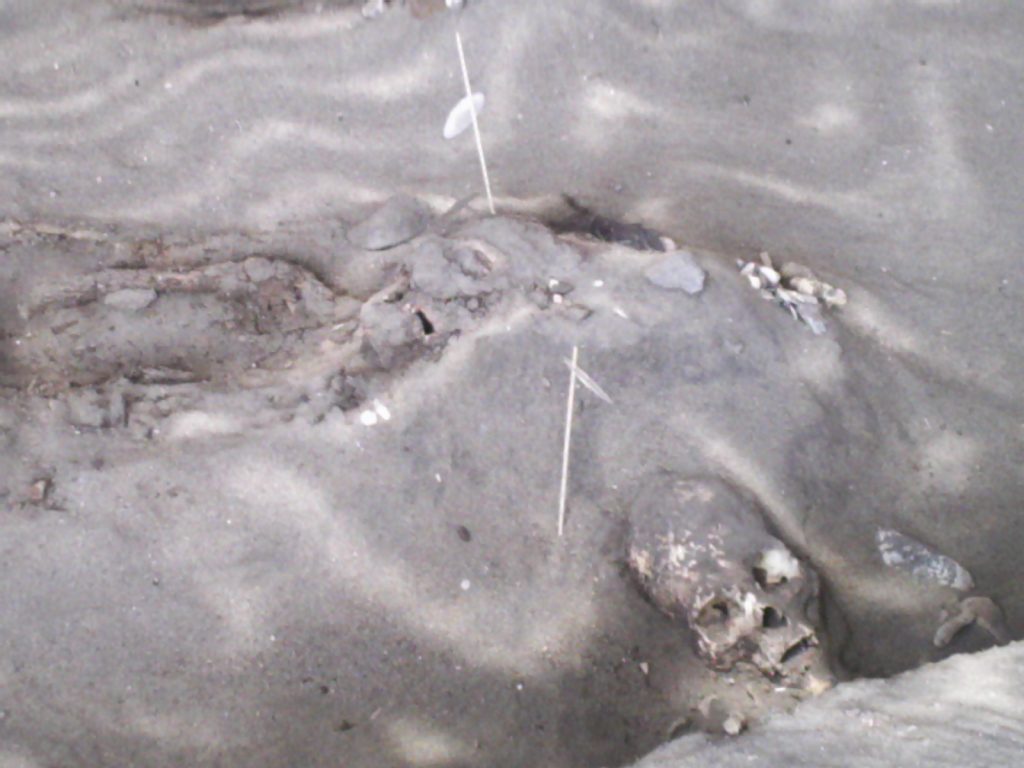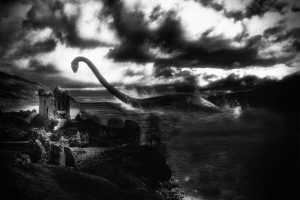When people hear the word mummy, most will think of the pharaohs found in tombs in Egypt. While they are the most well known, what many people may not realize is that the process of mummification has existed long before the Egyptians began doing it. Mummies, which scholars believe to be the oldest, even before recorded history, have been located in Chile, and are said to have belonged to an ancient people known as the Chinchorro.
What exactly is a mummy? A mummy is defined as “dead human or animal body [from ancient times] preserved by embalming or by unusual natural conditions.”1 Many of the areas in which mummies have been recovered all share one similar trait; each is known for extremely hot and dry weather. These climates cause the body to dry up and slow down the decomposition process.2

The oldest mummies belong to a people now referred to as the Chinchorro, who are believed to have lived between 8,000 BCE and 500 BCE. Evidence suggests that their practice of mummification predates Egyptian mummies by as many as two thousand years.3 The Chinchorro lived in the Atacama Desert, which is located in Southern Peru in Chile. They are believed to have been fisherman, living along the coast.4
Mummification was a complicated process. All organs, including the heart, eyes, and lungs were removed, followed by the skin. The body was then dried of fluids and stuffed with sticks, plant fibers, and straw. The body was disassembled by removing the bones and organs, and dried of all liquids. The body was then covered with black clay used to mold a new face, as the bones were put back into the body, along with sticks, clay, and plant fibers. A clay mask was made and placed over the skull, and the rest of the body was coated in Manganese paint, to give it a red color.5

Nearly two hundred Chinchorro mummies have been recovered from the Camarones River region. The earliest of these has been dated at 5050 BCE.6 The oldest mummies were children and small infants, suggesting that mummification was originally a practice carried out by grieving parents to remember their children. Upon further examination of the mummies, it is believed that high arsenic levels in the waters were the cause for high infant mortality rates among the Chinchorro.7
These mummies of Chinchorro today face great peril. Climate changes have caused the mummies to decay, along with many other treasures and artifacts. Microorganisms have grown from moisture in the air that are capable of decomposing skin. Researchers’ new goals are to find ways to preserve the ancient bodies of the Chinchorro people before it is too late.
- Columbia Electronic Encyclopedia, 6th Edition, April 2016, s.v. “Mummy.” ↵
- Salem Press Encyclopedia Of Science, January 2015, s.v. “Mummification,” by James L. Robinson. ↵
- Salem Press Encyclopedia Of Science, January 2015, s.v. “Mummification,” by James L. Robinson. ↵
- Salem Press Encyclopedia, January 2015, s.v. “Chinchorro Mummies,” by Michael W. Simpson. ↵
- Salem Press Encyclopedia Of Science, January 2015, s.v. “Mummification,” by James L. Robinson; Barbara Fraser, “Mysterious Mummies: An Anthropologist and a Geologist Team up to Solve the Puzzle of Chile’s Mummies,” Science World/Current Science Vol. 26 Issue 4 (2012): 8-11. ↵
- Salem Press Encyclopedia, January 2015, s.v. “Chinchorro Mummies,” by Michael W. Simpson. ↵
- Heather Pringle, “Arsenic and Old Mummies: Poison May Have Spurred First Mummies,” Science 324, no. 5931 (2009): 1130. ↵



63 comments
Mauricio Rebaza Figueroa
Excellent article! What a really interesting article, especially reading it as a Peruvian. I really had no clue about these discoveries before reading your article. The sources you used were really good and strong to help with the trust-worthiness of your article. You also used used really good images that helped me while reading. Overall, you did a really good job.
Elliot Avigael
Prior to reading the article, I always believed Chinchorro to be a location in stead of a group of people. It’s fascinating to see how burial processes have transformed over time; its almost as if ancient cultures wanted to keep the bodies loved ones physically present and easily accessible, but this is a custom that’s been shed of as history goes on.
It also makes you think who the Egyptians adopted the mummification process from, considering how much earlier the Chinchorro were mummifying their dead. Was this a custom naturally attained, or was there a single pioneer of the tradition?
Francisco Cruzado
I liked that the article shares with the public information on the ancient Americas, which is a fascinating topic. It took me a while to understand why the title says Peru and then it mentions Chile as the location for the Chinchorro culture, but I finally came to understand that the article meant to say that the Chinchorro people settled in a region comprised of Southern Peru (since the city of Ilo) and Northern Chile (mainly the Atacama desert and Antofagasta).
Christopher Hohman
Nice article. The process of mummification was quite an important process. It most likely meant that the Native Americans who practiced it believed in some sort of after life that the dead needed to be preserved for. The mummies of Egypt are well known because they were buried in quite spectacular tombs filled with gold and other valuable artifacts that were worth lots of money. They were not the first mummies though.
Matthew Swaykus
This article was interesting. In spite of my tendency to favor articles that are more kin to stories and an arc format, this article was very intriguing. I was satisfied by the authors care of breaking this assumption we all have that mummification occurred outside of the Nile river valley. It was enlightening and reveals how human we all are to mourn our dead, especially that of a deceased child.
Michael Hinojosa
Never once had I heard of the Chinchorro mummies of Peru, so you could imagine my shock when I read the title of the article! Whenever I do think of mummies I always do imagine Egypt rather than somewhere else, even though I can imagine that other cultures have done mummy based rituals as well. I could never imagine how complex and difficult the idea of mummifying a body would be.
Engelbert Madrid
I’ve never heard about the Chinchorro mummies from Peru. I think it’s fascinating to study the Chinchorro mummies to understand the foundation of their civilization. When it comes to learning ancient history about humans, there is not enough lessons that teaches early civilization of Native Americans in North and South America. This article only focuses in Chinchorro mummies; however, I found it interesting.
Gabriel Dossey
I never knew about the Chinchorro mummies. I always thought that the Egyptians did it first, however it does not surprise me. I think you could have flushed out the article more but none the less it was decent and told the story. I hope to one day see the mummies in person. I am saddened that the condition of the mummies is in decay due to external factors.
Nathan Alba
I thought it was great how the article pointed out the common misconception that mummies come from Egypt. I do find it somewhat interesting that humans over the past couple thousands of years have so many rituals that deal with death. It seems as though death may have been a large focus of the unknown, of what is to come. The process of mummification must have been a serious ritual for people to willing prepare dead bodies for what is assumed to happen after death.
Antoinette Johnson
Mummies were away for people back in the ancient times to remember their loved and ones and make it possible for them to go to the afterlife. Mummification is not an easy process and requires a lot of work to get the bodies in the perfect condition and ready for sealing. Mummies are interesting because it seems like a process where you can be close to the person, but yet so far away from the deceased.